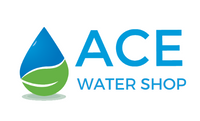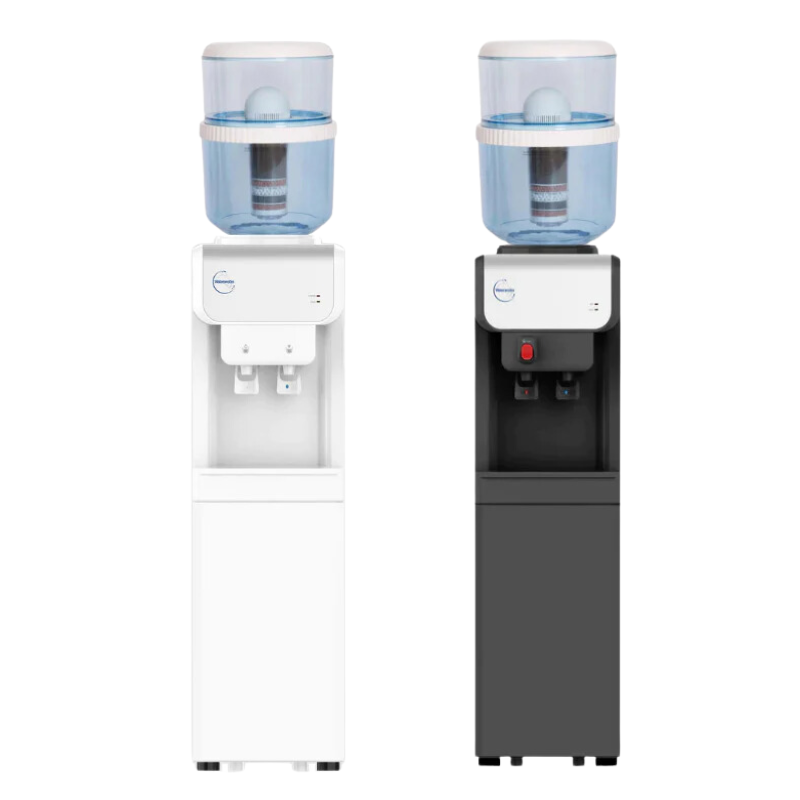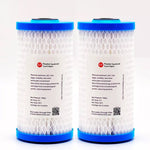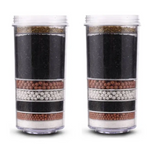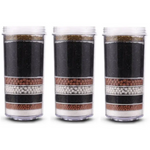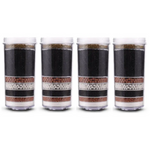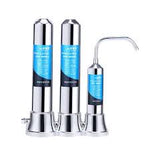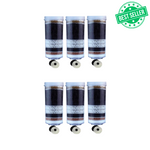You have no items in your shopping cart.
What Are the Benefits of Using a Charcoal Water Filter?
Water filters use a type of charcoal known as 'activated charcoal' to clean the water. Activated charcoal works through the adsorption process. Adsorption and absorption are not the same things. Adsorption chemically attaches contaminants to the surface of the charcoal filter rather than physically absorbing them.
Activated charcoal is a good water filter because it removes pollutants while leaving important minerals and salts in the water.
WHAT ARE THE BENEFITS OF USING A CHARCOAL WATER FILTER?
Its primary function in pre-treatment is to eliminate free chlorine and chloramines prior to reverse osmosis to avoid membrane oxidation damage. Activated carbon interacts quickly with free chlorine in the water to form chlorides, and requires only a tiny amount of carbon. To catalyze the elimination of chloramines, it needs more than 5 times the volume of carbon.
High purity activated carbon is a powerful organic compound adsorber. It removes residual organic compounds from purified water. These can come from the feedwater, the system, or the ion exchange resins themselves. Furthermore, it's a useful tool for maintaining low TOC levels, and it works in tandem with UV oxidation.
Additionally, you can employ activated carbon's attraction for organics in vent filters to safeguard purified water reservoirs.
HOW DOES IT PURIFY WATER?
The tap water you drink contains a variety of contaminants and compounds that can have long-term detrimental effects on your health. As a result, experts strongly recommend activated carbon for water filtration. Activated carbon draws hundreds of contaminants and impurities from the water.
According to recent NSF and EPA studies, it can eliminate 60 to 80 contaminants, as well as 22 to 30 compounds.
The quality and form of activated carbon determine the efficiency with which pollutants and chemicals it removes. Activated carbon technology, according to an EPA report, can remove all 32 identified organic contaminants, including THMs. The most commonly used 12 herbicides, as well as 14 pesticides like glyphosate don't affect activated carbon.
Furthermore, whole-house filters, reverse osmosis (RO), UV filters, and a range of other filtration technologies use activated carbon or charcoal filters.
Activated carbon filters are comparable to multi-media filters, except they don't have the air scour stage in the backwash. You can use higher filter vessel side shells to offer deeper carbon beds for extended reaction durations. It's because certain organics require a longer exposure time to the filter. Backwashing carbon beds helps remove trapped silt, prevents packing and head loss, and removes carbon fines formed by granule friction.
CLASSIFICATIONS OF CHARCOAL WATER FILTER
Granular Activated Carbon (GAC)
Granular activated carbon particles are larger than other varieties of activated carbon, although they have a smaller exterior surface area. Because GAC particles diffuse quickly, they're best for the adsorption of vapors and gases. Most people use it for water treatment.
Powdered Activated Carbon (PAC)
Powdered activated carbon contains extremely fine carbon particles. It typically adds PAC particles to other process units directly, such as rapid mix basins, raw water intakes, and clarifiers. For carbon block filters, they are the preferred particle.
Extruded Activated Carbon (EAC)
EAC particles combine PAC with a binding agent to form a robust, cylindrical, or spherical particle. Some use typically in gas phase applications due to their low-pressure drop, minimal dust content, and high mechanical strength. CTO filters. As a result, it eliminates chlorine, taste, and odor, employs EAC particles.
Impregnated Carbon
These impregnated, porous carbon particles consist of various inorganic substances like silver and iodine. Some usually use silver-loaded activated carbon as an adsorbent in water purification. It also shows to suppresses microbial growth.
BAC (Bead Activated Carbon)
BAC (Bead Activated Carbon) contains petroleum pitch. The BAC particles, like EAC particles, are ideal for their low dust content and mechanical strength. Its spherical shape makes it perfect for water treatment applications.
Activated Carbon Cloth
You can make activated carbon cloth by weaving activated carbon into technical rayon fiber. The completed product possesses carbon filtering qualities. You can use it for a variety of purposes, including odor absorption and protection.
Polymer Activated Carbon
A biocompatible polymer in polymer activated carbon covers the porous carbon particle. It results in a smooth, porous outer shell that does not obstruct the pores of the finished carbon. Hemoperfusion, a type of medical treatment, makes extensive use of polymer activated carbon.
FORMS OF CHARCOAL WATER FILTER
The two most prevalent types of carbon used for water filtration are powdered activated carbon (PAC) and granular activated carbon (GAC) (GAC). PAC is more successful at removing a range of pollutants from water than GAC because its particles are smaller.
GAC Filters
Also known as “fixed-bed carbon filters,” GAC filters are typically cylindrical containers that hold particles of GAC. It adds water to the container and as the water flows through the system. The loose carbon particles filter out impurities.
However, channeling is a common problem with GAC filters. As water enters the chamber, it automatically flows through the container by the path that presents the least resistance. So, it means carbon particles bypassed by the water are underutilized, reducing the overall efficiency of the filtering system.
Plus, GAC filters are also known for growing bacteria. As water flows down frequently traveled “channels” through the activated carbon, pockets of carbon and stationary water remain behind. These areas of relatively stagnant and contaminated water are ideal settings for bacterial growth.
Carbon Block Filters
Solid carbon block filters are densely packed blocks of PAC and GAC particles of varying sizes. It forces water through the pores of the carbon block, and as it travels through the filter, the tiny carbon particles remove a wide range of contaminants.
The primary advantage of block filters over GAC filters is the elimination of channeling. With carbon block filters, the carbon particles are stationary and every particle is used to maximum effectiveness. As a result, it filters a wide range of contaminants from the water. The carbon adsorbs small pollutants, while larger impurities are too big to pass through the pores of the block and are left behind.
FINAL THOUGHTS: What Are the Benefits of Using a Charcoal Water Filter?
Activated carbon converts free chlorine to chloride and carbon dioxide as little as possible. It also uses a somewhat slow catalytic reaction to break down chloramines into ammonia, nitrogen, and chloride. Moreover, it adsorbs organic substances in the carbon matrix's pores.
There’s no wonder that charcoal water filters have become popular over the years. Its efficiency in filtering our tap water is impressive! Get charcoal water filters in Australia here at Ace Water Coolers!
